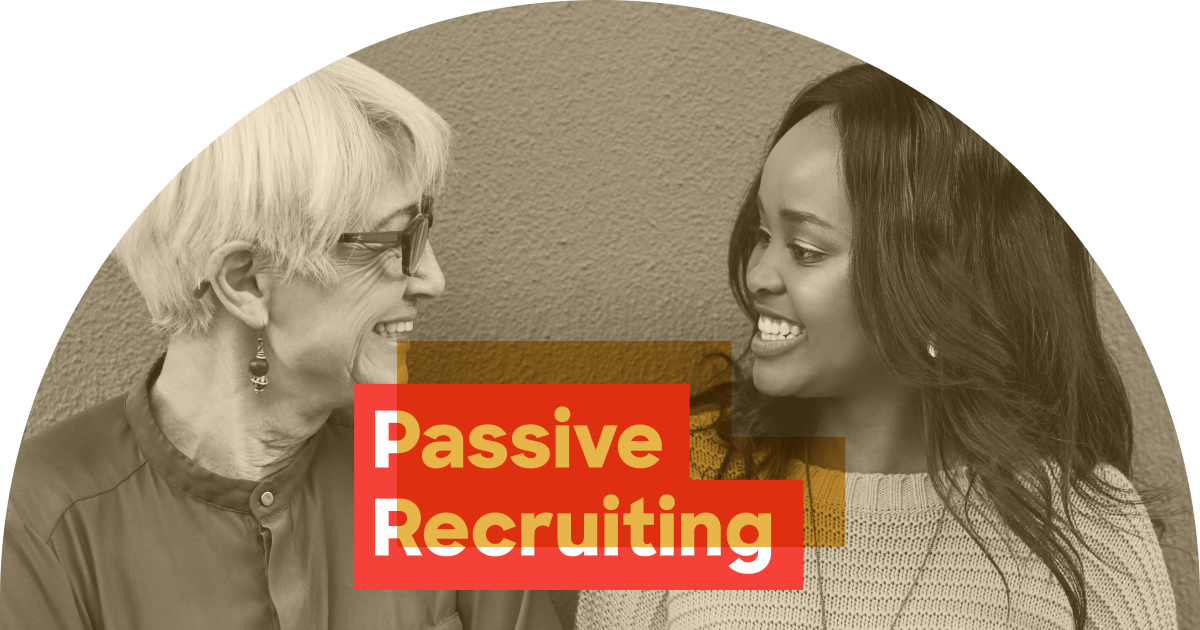Most organizations know how to recruit active candidates. But when active candidates aren’t the right fit, how do you search beyond those already in the job market?
Passive candidates with job security and a strong track record are traditionally more challenging to recruit. However, things are changing in the post-pandemic economy. According to CNBC, one in four workers is considering quitting their job. This suggests that many more passive candidates exist in the job market.
Early on in the pandemic, many people were anxious about changing employers. Times were uncertain, making it difficult to start a new opportunity, site unseen. As the workforce transitioned to working from home, candidates couldn’t get a sense of company culture or what a new organization was like. Many people stayed put.
But as we emerge from the pandemic, more workers appear willing to explore new positions.
“We’re seeing a huge uptick across the board as restrictions lift,” says Kerry Moore, Vice President of Talent Acquisition at ZoomInfo.
Now is the best time to start building a talent pipeline of passive candidates. Let’s take a closer look.
What is passive recruiting?
A passive candidate is someone who is not actively looking for a job but has the skills and experience that qualify them for your open position. Engaging with passive job seekers means actively courting potential candidates who:
May not be proactively seeking a new job
May not know that your organization exists
Active vs. Passive Candidate Recruiting
Much like traditional marketing, it can help to think of your ideal personas for recruiting.
Typically, active candidates are highly motivated in their job search. Their resumes are ready to go, their websites are up to date, they attended your last webinar, and applied to the open position on your careers page. They also tend to be easier to engage and are more responsive throughout the hiring process.
Passive candidates are understandably more challenging to engage. If they’re satisfied with their current position, they’re probably not looking to interview with other companies. Additionally, they may require more flexibility during the recruitment process to accommodate their current position. And if you’re successful, anticipate delayed start dates to ensure they give sufficient notice at their existing job.
When targeting passive candidates—even if they flat out reject your offer—you can still create a connection with them and add them to your network. When they (or someone they know) are looking for a new opportunity, they may remember you and reach out.
8 Techniques for successful passive recruiting
1. Get to know your candidate
Take the time to learn about your potential candidate before sending them a prospecting email or connecting on social media.
Review their skills, work history, and the type of content they prefer. For example, do they subscribe to industry publications or provide thought-provoking comments on LinkedIn? Background information can help you determine if they are a good fit for your company.
2. Go beyond the information on job seeking sites
Leverage a variety of networks and forums to conduct research and outreach for the best candidate sourcing results. For example, web developers may frequent online communities such as GitHub or Stack Overflow, while others might spend time on Twitter or Instagram.
A candidate’s online activity can help you understand their main motivators and interests. You can use this background intel to personalize the messaging in your recruitment outreach, improving your chances of getting a response.
3. Emphasize opportunities and growth potential
For you, it’s just a job that needs to be filled. But for your candidate, it could be a major life change! When approached by a recruiter, their first response might be: “What’s in it for me?”
According to a study by CareerAddict, 35% of respondents revealed they would consider returning to their former job if they were offered better pay.
However, people don’t always leave for more money. A survey by Koan, a goal-setting platform for teams, found that employee engagement and communication are critical in keeping workers motivated in their roles. Engaged employees are:
5x more likely to make progress on goals if they engage with the company mission
6x more likely to make progress on team goals if satisfied with their direct manager
7x more likely to produce work they are proud of if they know that their work matters
A little research on potential new hires will help you understand what an “awesome opportunity” would be for them. Seek to understand their job expectations. Do they want more recognition, greater challenges, a better work-life balance, or potential travel? Do they expect a significant jump in salary?
Based on this knowledge, address the unique opportunities the position at your company would offer the candidate that their current position doesn’t. Then explain how this new job will benefit their career goals and position them for future advancement.
4. Build employee ambassadors and a strong brand
When you reach out to a passive candidate, they will probably research you and your company. Companies that have a strong web presence, good branding, and great reviews are more likely to capture the attention of a passive candidate.
Your employee ambassadors’ favorable comments and reviews on hiring platforms such as Glassdoor and Indeed can positively impact the process. If a potential hire can see genuine engagement from your company’s existing employees, they will find the opportunity a lot more attractive.
5. Give candidates a great experience and build a pro-employee reputation
It’s critical to build a relationship of trust with potential job seekers. Your candidate experience should make potential new hires know that you are working to benefit their careers. Delivering a successful candidate experience should make them feel confident about leaving their job for an unknown new opportunity.
Make your pro- employee stance clear on your website’s careers page, through your job postings, and employee reviews. Developing a good reputation in this regard also means maintaining healthy relationships with rejected job seekers and former employees.
6. Offer candidates work-life balance
Many professionals had their first remote-work experience due to the COVID-19 lockdown restrictions. Working from home clarified the importance of work-life balance.
“A lot of organizations are really ramping up their hiring right now and that’s creating a two-pronged challenge for recruiters. Firstly, many candidates want to be fully remote and secondly, they have multiple offers on the table, making it difficult to bring them on board,” Moore explains.
Employers who are unwilling to offer employees more flexibility by either offering a fully remote opportunity or a hybrid work model are more likely to miss out on high-quality talent.
Also, a survey by MetLife found that living through the pandemic has caused employees to value safety. 72% percent said that the safety and protection of their family is more important to them than ever before. They are looking for employers to protect their holistic well-being.
7. Stay on top of industry developments
Knowing what’s going on in the industry can help recruiters identify more potential passive candidates.
ZoomInfo’s TalentOS simplifies the process by creating alerts for events such as mergers and acquisitions, hiring plans, layoffs, new projects, etc. Any kind of change or uncertainty might cause an employee to consider leaving their current situation.
Even if the news doesn’t affect the candidate directly, recruiters who understand the dynamics of their industry will be more credible to candidates.
8. Ask candidates the right questions
Interviewing passive candidates requires a different approach than active candidates. If someone hasn’t considered changing jobs until now, the following questions can help persuade them to consider your offer:
Questions to Ask a Passive Candidate
What was the most fulfilling job you’ve ever had and how does your current job measure up?
What do you like most about your current position? What do you like least?
Is your current position as satisfying as when you first started?
Is this your dream job?
Getting your best talent begins with engaging passive candidates
Creating trust and building relationships with passive candidates is a marathon, not a sprint. You reach the finish line when your new hire is happy and flourishing at your company.


